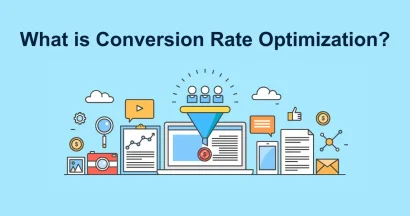In today’s digital landscape, having a strong Social Media Presence is no longer optional—it’s a necessity. Social media platforms have become critical spaces for businesses to connect with their audience, increase brand visibility, and drive growth. The challenge lies in being present on these platforms and creating a lasting impact that resonates with your audience. This guide offers actionable tactics to help you build and maintain a powerful social media presence that stands the test of time.
Understanding Your Audience
Before creating content, the first step in building a strong social media presence is understanding your audience. Knowing your target audience—down to their demographics, interests, and behaviors—provides the foundation for everything else you do on social media.

Start by identifying the key demographics of your target audience. Are they millennials or Gen Z? Are they primarily located in urban or rural areas? What are their interests, pain points, and desires? Understanding these aspects helps you tailor your content to meet their needs effectively. This is where audience insights come into play. Most social media platforms offer analytics tools that provide detailed data on your audience’s behavior. These insights allow you to refine your strategies, ensuring that your content resonates with the people you’re trying to reach.
Incorporating YouTube promotion services into your strategy can also help you reach a broader and more targeted audience on one of the most popular platforms. By leveraging these services, you can enhance your video’s visibility, ensuring that it reaches the right viewers who are most likely to engage with your content, improving your Social Media Presence.
Crafting a Cohesive Brand Voice

A strong social media presence isn’t just about posting regularly; it’s about communicating in a way that aligns with your brand’s identity. Establishing a cohesive brand voice is essential for creating a consistent experience across all your social media platforms. Your brand voice should reflect your company’s mission, values, and personality. Are you a fun, quirky brand, or do you take a more serious, professional tone? Defining this voice is crucial because it shapes how your audience perceives your brand.
Consistency is key when it comes to brand voice. Whether you’re posting on Facebook, Instagram, Twitter, or LinkedIn, your messaging should be consistent. This doesn’t mean that you can’t adapt your tone slightly depending on the platform, but the core of your message and the way you communicate it should remain the same. This consistency builds trust with your audience, as they know what to expect from your brand regardless of the platform.
Authenticity is another critical component of a cohesive brand voice. In a world where consumers are increasingly skeptical of brands, authenticity is more important than ever. This means being genuine in your communication, owning up to mistakes, and engaging with your audience in a way that feels real and personal. When your audience feels that they can trust your brand, they are more likely to engage with your content and become loyal followers.
Content Strategy Development
With your audience identified and your brand voice established, it’s time to develop a content strategy. Your content is the cornerstone of your social media presence, and creating a strategy ensures that your posts are consistent, relevant, and engaging.

Understanding the types of content that resonate with your audience is crucial. Different platforms favor different content formats. For example, Instagram is highly visual, making it ideal for photos, videos, and infographics, while LinkedIn is more text-focused, favoring articles and professional updates. It’s essential to choose the right content types and formats for your audience and the platform you’re using.
Planning your content is another key aspect of a successful strategy. A content calendar allows you to schedule your posts ahead of time, ensuring that you maintain a consistent presence on social media. This consistency is critical for keeping your audience engaged and growing your following over time.
Leveraging Paid Advertising
While organic reach is important, leveraging paid advertising on social media can significantly enhance your Social Media Presence. Social media platforms offer robust advertising tools that allow you to target specific audiences with precision. Understanding types of digital ads how to use these platforms effectively can be a game-changer for your social media strategy.

Each social media platform offers its advertising options, from Facebook Ads and Instagram Ads to LinkedIn Ads and Twitter Promotions. Each has its strengths, so it’s essential to choose the one that best aligns with your goals. For example, Facebook Ads are incredibly versatile and offer advanced targeting options, while LinkedIn Ads are ideal for B2B marketing.
Targeting and retargeting are two powerful strategies you can employ with paid advertising. Targeting allows you to reach new audiences who fit your ideal customer profile, while retargeting helps you re-engage users who have previously interacted with your brand. This combination can significantly increase your chances of converting leads into customers.
Social Media Presence: Conclusion
Building a strong social media presence is a long-term commitment that requires a strategic approach. By understanding your audience, crafting a cohesive brand voice, developing a content strategy, leveraging paid advertising, engaging with your audience, analyzing performance, and staying ahead of trends, you can create a lasting impact that drives brand visibility, customer engagement, and business growth.
Read more: Dropshipping vs Affiliate Marketing: Which is Better?
Contact US | ThimPress:
Website: https://thimpress.com/
Fanpage: https://www.facebook.com/ThimPress
YouTube: https://www.youtube.com/c/ThimPressDesign
Twitter (X): https://twitter.com/thimpress


